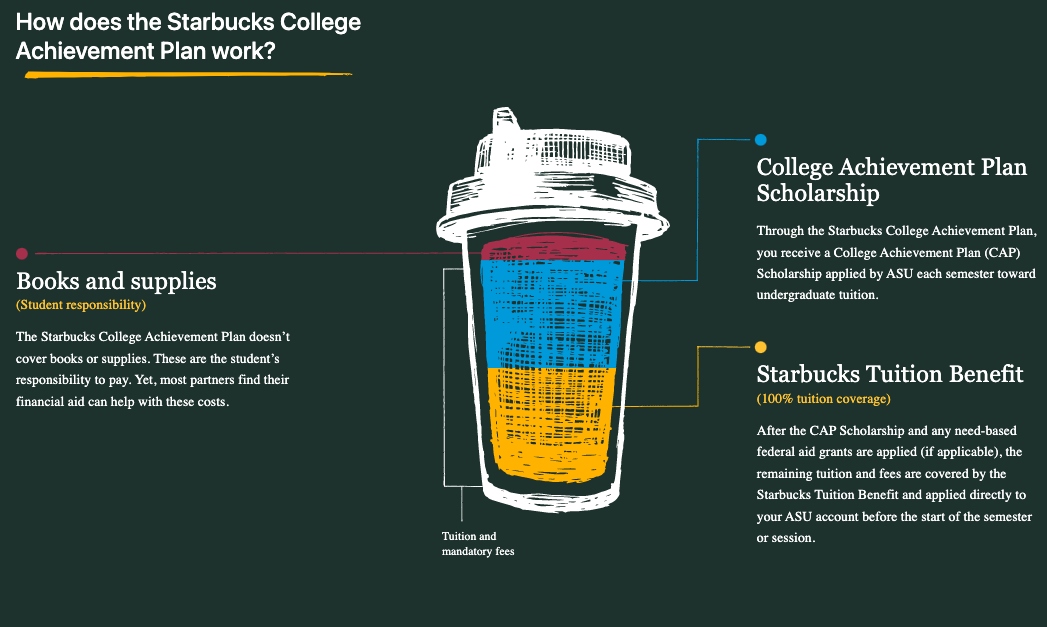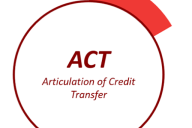You have /5 articles left.
Sign up for a free account or log in.
Veronica Molless is a member of the Beyond Transfer (formerly Tackling Transfer) Policy Advisory Board and an advocate for today’s students, many of whom, like Molless, are adults, juggle competing responsibilities such as work and are transferring across institutions during their educations. Molless is currently studying to receive her bachelor of science in communications from Arizona State University, where she transferred after earning her associate of arts at West Hills Community College. The Beyond Transfer Policy Advisory Board collaborates on recommendations for the field designed to dismantle inequitable credit mobility and transfer policies and practices.
Cristen Moore is an independent consultant to HCM Strategists supporting TransferBOOST, a collaboration with the Institute for Higher Education Policy that is funded by the ECMC Foundation. TransferBOOST works with institutions in Arizona, Illinois and Virginia to increase equity in transfer student outcomes by delivering to students a clear message that credits transfer and apply to degree completion, costs are streamlined, and time-to-degree is minimized.
The following blog post is a conversation between Molless and Moore about Molless’s educational journey and how clear communications about affordability, combined with strong student supports such as coaching, served as driving forces behind her transferring and pursuing her bachelor’s degree.
Moore: Veronica, thank you for speaking with me today. Can I ask you to start by describing your educational journey?
Molless: Absolutely. I graduated from high school in 2005. The following school year, I attended Allan Hancock College in Santa Maria—it’s about two hours southwest of my hometown. I was recruited to play on the women’s basketball team.
I spent one year there. I had three awesome roommates who were on my team as well, but I faced challenges in covering costs of living expenses. After a year I transferred to West Hills College.
West Hills is about a 20-minute drive from my hometown. I was able to live at home, which eased my financial burden, and I also had the support of my family members. West Hills helped me to finish my associate degree on time, in 2009. West Hills took all the credits I earned at Allan Hancock and provided some important services such as transportation to the college—I would not have been able to get to college if they didn’t have a dedicated van.
What stands out from my time at both colleges were the memories I created with amazing people, some of whom have remained close friends to this day.
I am excited to be working on my bachelor of science in communications at Arizona State University, which I started in fall of 2021.
Moore: There was a multiyear gap between you completing your associate degree and when you transferred and enrolled at ASU. Why did you eventually transfer?
Molless: My art instructor and mentor at West Hills encouraged me to transfer to an art school. Years prior, I had the opportunity to attend California Institute of the Arts for the summer. But due to the high cost, I chose to work instead. My aspiration was to be an illustrator, and I’ve been fortunate to have been able to work on community art projects over the years, but I found it hard to find a job with an associate degree in art.
I started working at Starbucks in 2010, where I developed a passion for coffee and an excitement for the people I got to work with and the guests I got to meet. From there, I really have to credit the Starbucks College Achievement Plan (SCAP) and its partnership with ASU for both reigniting my interest in education and helping me see it was possible.
Moore: Oh, that’s interesting. Can you tell us more about what captured your imagination about the Starbucks College Achievement Plan, or SCAP, as you called it?
Molless: There are a few things that ASU and Starbucks do really well. They have a graphic—that features a coffee cup, of course!—that makes very clear what is and is not covered financially. They also make it very affordable. Tuition and fees are fully covered. There are no income restrictions. If you drop out, you keep your credits. If you leave Starbucks, you don’t have to pay them back. At one point, you had to pay tuition ahead and get reimbursed. They dropped that so you don’t have to come up with the money up front, juggle finances, take out loans. Honestly, that can be a time-consuming and overwhelming process, so this direct, up-front payment process alleviated a lot of stress.
You know when you sign up for a credit card and you see a ton of fine print? That does not exist for this program. They are very clear.
 As an employee at Starbucks, I was able to get health insurance and other benefits, such as access to Headspace and Lyra Health, which provides emotional and mental health supports.
As an employee at Starbucks, I was able to get health insurance and other benefits, such as access to Headspace and Lyra Health, which provides emotional and mental health supports.
Starbucks also integrates the work and academic calendars. So if I had to request time off for a class, or shift my schedule for a new semester, my supervisors and I all could see an integrated work/education calendar. The cultures are integrated, and that consistency feels important.
I now no longer work at Starbucks, but SCAP told me that I can afford college, and it brought me back into postsecondary education, and I am continuing at ASU. They said, “You can go to ASU, and this is the information that you need to understand what you are getting yourself into.” That really made a huge difference for me.
Moore: How many credits do you still need to complete your bachelor’s degree?
Molless: I can log into DARS [Degree Audit Reporting System] while we are talking to check. As of right now, I need 25 credits to complete my degree.
The ability to look at my credits and understand how they are applied to my progress is helpful. I don’t think of affordability as tuition alone. To me, it’s a combination of things, like the fact that when I transferred, all of my credits counted toward my degree. Another is understanding what I can do after my degree. ASU has resources like the Handshake app and seminars to ensure we are on the right track to find careers after graduation. Classes are well structured, too. I don’t know how to put my finger on it, but I feel like I leave each class with a stronger foundation for my next class. Each class is jam-packed with interesting lessons and leaves me wishing I had more time to take more in! And at any time, I can go online and see how many credits I have left in order to complete my studies.
Moore: I really appreciate your willingness to share your experiences and insights. Before we conclude, do you have any advice for your peers?
Molless: Lean in on the resources provided by the college or university. They have them in place to help us succeed. One resource I am beyond grateful for is the coaches that are assigned to students. The person assigned to me is more than a coach—she has been a lifeline and a friend. Similarly, my academic adviser gave me a sense of what the pace would be like and got me set up with classes that started me on the right track for my degree. They take your hand and they grip it.
|
Factors That Matter, as Named by Molless |
Implications for Institutional Practice |
|
Clear communications about cost “You know when you sign up for a credit card and you see a ton of fine print? That does not exist for this program.” |
Research shows that there is power in providing students with clarity and certainty about costs at the outset of pursuing a credential. |
|
Holistically addressing financial needs “I was able to live at home, which eased my financial burden, and I also had the support of my family members … I would not have been able to get to college if they didn’t have a dedicated van.” |
Today’s students juggle multiple competing responsibilities such as working and caring for others, and students’ financial needs extend far beyond tuition. |
|
Coaching “The person assigned to me is more than a coach—she has been a lifeline and a friend … They take your hand and they grip it.” |
Research shows that strong advising and coaching from trained professionals matters to student success. |
|
Applicability of credits to completion “I don’t think of affordability as tuition alone. To me, it’s a combination of things, like the fact that when I transferred, all of my credits counted toward my degree.” |
How credits apply to student completion is a key aspect of overall affordability and student outcomes. |
|
Timely information about credits and time to degree “To visually see my progress on DARS [Degree Audit Reporting System] is extremely critical. DARS became a powerful tool because of the initial conversations with my academic adviser.” |
There are promising efforts in the field designed to ensure students who are transferring receive timely information about which of their credits will apply to program completion, for which courses they should register and how many credits remain to completion. Of note, Veronica pointed to the combination of the technology and her academic adviser. |
|
Community and sense of belonging “What stands out from my time at both colleges were the memories I created with amazing people, some of whom have remained close friends to this day.” |
Research shows that building community and fostering a sense of belonging supports student success. |


